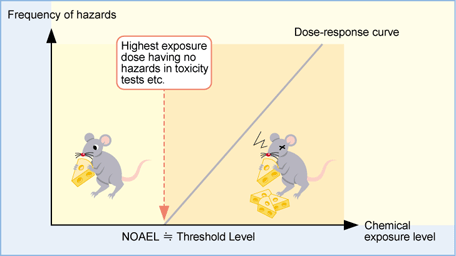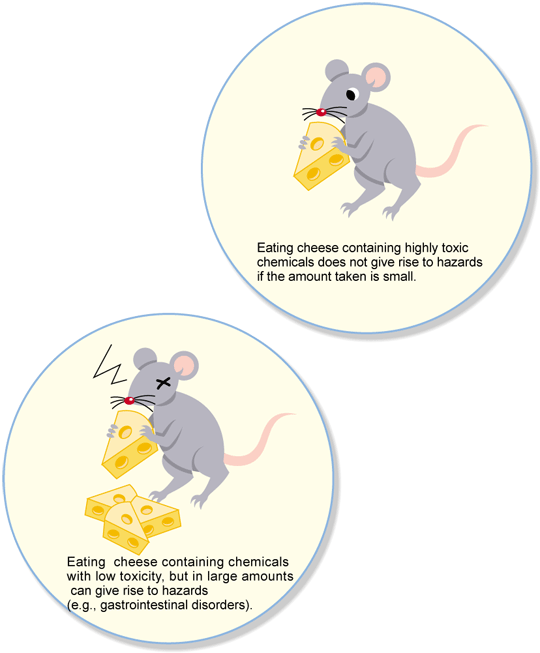Risk Assessment on chemicals-For Better Understanding-2
Concepts of Risk Assessment
The highest exposure dose having no hazards (called the “threshold level”*1) can be determined from the evaluation of hazards in toxicity tests etc. Risk Assessment of chemicals is conducted by comparing the magnitude of the “estimated exposures” based on the threshold level and exposure evaluation.
*1: See "Methods and threshold levels for carcinogenicity assessment"

If the highest exposure dose having no hazards is the No Observed Adverse Effect Level (NOAEL), which is approximately equal ≑ to the threshold level, there will be no hazards when the estimated exposure dose is lower than the NOAEL.
One such example is:
| NOAEL | 10 mg/kg/ day |
|---|---|
| Estimated exposure dose | 1 mg/ kg/day |
If the estimated exposure dose is higher than the NOAEL, hazards may appear. One such example is:
| NOAEL | 10 mg/kg/ day |
|---|---|
| Estimated exposure dose | 30mg/ kg/day |

When a chemical has high toxicity (low NOAEL), no hazards appear if the exposure is lower than the NOAEL. Conversely, if a chemical has low toxicity (high NOAEL), hazards may appear if the exposure is higher than the NOAEL.
This is the concept of “Risk Assessment.”

Contact us
- Chemical Management Center, National Institute of Technology and Evaluation
-
Phone number:+81-3-3481-1977
Fax number:+81-3-3481-2900
Address:2-49-10 Nishihara, Shibuya-ku, Tokyo 1510066, Japan MAP
Contact Form